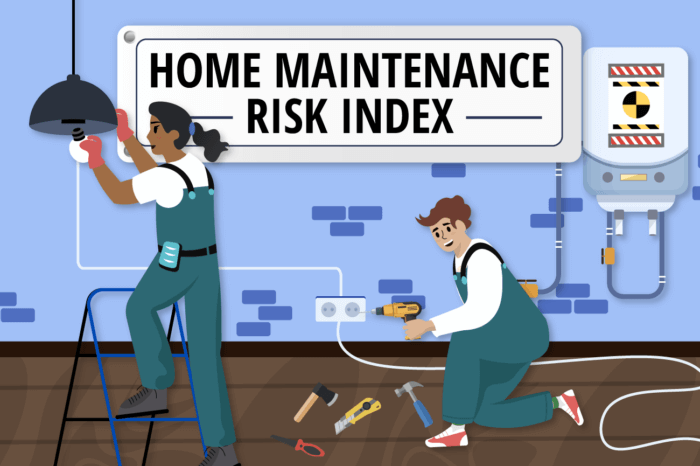
The end of financial year can be a confusing time for many of us. There are often conflicting messages around private health statements, Medicare Levy Surcharge, Lifetime Health Cover loading and tax. All of this makes finding important information all the more challenging.
At comparethemarket.com.au, we’re all about keeping it simple, especially when it comes to your health cover. Let’s break down the puzzling world of private health and tax.
- Tax benefits for having private health insurance
- Medicare Levy & Medicare Levy Surcharge explained
- The Australian Private Health Insurance Rebate
- Lifetime Health Cover (LHC) loading
Should I get health insurance for the tax benefits?
There is a significant tax benefit advantage to enjoy from taking out private health insurance, as well as several disadvantages for failing to get covered.
- The Australian Government Rebate. Based on age & income, the government will cover a percentage of your health insurance premiums. The standard rebate for someone under the age of 65 who earns less than $90,000 per annum is 25.93% in 2017/18; a smaller percentage than previous years. This rebate can be discounted from your monthly premium – or you can claim it through your tax return.
- Medicare Levy Surcharge. The surcharge is an additional tax for those who don’t have private hospital cover and earn more than $90,000. You could be charged up to a 1.5% of your taxable income in addition to the 2% Medicare Levy. However, you would have to be earning a considerable annual income in order to qualify for the full amount.
Many people take out private health cover to skip public hospital waiting lists or take advantage of treatments options more catered to their lifestyle. If you take out health insurance purely for tax benefits, you’re short-changing yourself as many of these policies offer fantastic value for money.
In short, there’s much more to private health cover than a short-term tax benefit. There’s also plenty of things you’ll need to be mindful of each tax season.
Medicare Levy Surcharge
What is the Medicare Levy?
There is the misconception that Medicare in Australia is free, but this is not the case. To ensure all Australians have access to healthcare, taxpayers must pay a percentage of their annual taxable income to fund Medicare. This amount is known as the Medicare Levy, calculated at 2% of taxable income as of 2017.
Depending on your age or income level, this rate may be reduced. In fact, some individuals are exempt from paying the Medicare Levy altogether. This may include the following people:
- Residents of Norfolk Island or a foreign country
- Veteran’s Affairs Gold Card holders
- Those who qualify for medical exemption from the levy
- Low-income earners
- Individuals who do not qualify for Medicare benefits.
What is the Medicare Levy Surcharge?
The Medicare Levy Surcharge (MLS) is an additional tax applied to Australian taxpayers who don’t have private hospital cover and who earn above a certain income threshold – usually those who are higher earners. The surcharge gets taken straight out of your paycheck. In fact, some of you may not realise you’ve been paying it!
What is the difference between the Medicare levy and the surcharge?
The chief difference between the levy and the surcharge is this:
- The Medicare Levy is paid by many Australians to fund Medicare, but it doesn’t target low-income earners.
- The Medicare Levy Surcharge is paid by those who can afford it by targeting higher income earners.
Why are higher income earners required to pay the MLS?
The purpose of the MLS is to lessen the strain on the public hospital system and, subsequently, reduce hospital waiting times. The surcharge encourages those who can afford to ‘go private’ to do so, instead of relying on the public system.
What is the current surcharge rate?
Your rate depends on a few factors – namely, your age, income bracket and family situation. Your income is calculated by adding together your taxable income and fringe benefits.
As of April 2017, the following rates apply to each tier system:
| Medicare Levy Surcharge – Income Thresholds | ||||
| Singles | Under $90,000 | $90,001 – $105,000 | $105,001 – $140,000 | $140,001+ |
| Families ^ | Under $180,000 | $180,001 – $210,000 | $210,001 – $280,000 | $280,001+ |
| Surcharge | 0% | 1% | 1.25% | 1.5% |
| Retrieved from Privatehealth.gov.au | Information current as of 03/04/2017 ^ For families with children, thresholds increase by $1,500 for each child after the first. Families include couples, de facto couples, and single parents. | ||||
Someone who is required to pay the MLS can avoid doing so by taking out private hospital cover with a registered health fund. This does not include extras cover: in order to be exempt, a policy must cover all or some of the fees required to stay in a hospital.
There are certain circumstances which would make a person or family exempt from the MLS. This information can be found at privatehealth.gov.au.
Find out whether you have to pay the MLS with our calculator.
The Australian Government Private Health Insurance Rebate
Good news: you can save money on your private health insurance without compromising the quality of your cover. The Private Health Insurance rebate is federal government scheme set up to help Australians manage the costs of their premiums. This comes in the form of a rebate, where members can either apply the rebate to reduce their overall premiums or factor it into their annual tax refund.
The rebate is means (i.e. income) and age tested and uses the same tier system as the MLS. The only difference is that rates vary depending on the age brackets.
| Private Health Insurance Rebate levels | ||||
| Base Tier | Tier 1 | Tier 2 | Tier 3 | |
| Singles | Under $90,000 | $90,001 – $105,000 | $105,001 – $140,000 | $140,001+ |
| Families^ | Under $180,000 | $180,001 – $210,000 | $210,001 – $280,000 | $280,001+ |
| < age 65 | 25.93% | 17.29% | 8.64% | 0% |
| Age 65-69 | 30.26% | 21.61% | 12.97% | 0% |
| Age 70+ | 34.58% | 25.93% | 17.29% | 0% |
| Retrieved from Department of Health | Information current as of 03/04/2017 ^ For families with children, thresholds increase by $1,500 for each child after the first. Families include couples, de facto couples, and single parents. | ||||
Lifetime Health Cover
What is Lifetime Health Cover loading?
Lifetime Health Cover (LHC) loading is an initiative designed by the government to encourage people to take out private hospital cover earlier in life and maintain it long term. If you don’t have private hospital cover after the 1st of July following your 31st birthday, you will have to pay a 2% loading for every year you’ve been uninsured for since you’ve turned 30.
Lifetime Health Cover only applies to private hospital cover, not extras cover.
Can you claim back LHC on tax?
LHC loading is not a claimable tax benefit. This is all the more reason why you should try to avoid it (if possible). Below are some quick facts about LHC and tax returns:
- LHC is added to the cost of your premium each month, rather than levied at tax time.
- When it comes to applying for the private health insurance rebate, the amount you can claim (e.g. what you paid in premiums) excludes any LHC loading you’ve paid throughout the year.
When does the Lifetime Health Cover loading come into effect?
The 1st of July following your 31st birthday is known as your LHC loading base date. Each year after that, you will see an additional 2% added to your premium if you defer taking out private hospital cover. The maximum possible loading a person can be charged is 70%.
Let’s say, for example, you’re a 40-year old who has just taken out private hospital cover for yourself. Because you waited 10 years past the age of 30 to apply, you’ll pay 20% more for your private health insurance.
On the upside, if you’ve held private health insurance for ten continuous years, your loading will be removed and will remain at 0% for as long as you retain your hospital cover.
How does the LHC loading apply to couples and families?
For a family or couple taking out private hospital cover, LHC is calculated differently than it would be for a single. Those taking out joint cover will have their LHC loading “averaged”.
Say, if you’re a couple aged 38 (16% loading) and 35 (10% loading), your combined loading equates to 26%.Once halved (or averaged), it will come down to 13%. This is the sum total LHC loading you’ll be charged under a joint policy.
Who is exempt from the LHC?
There may be situations where you’re exempt from Lifetime Health Cover loading. You won’t have to pay LHC if…
- You’re under the age of 31. No one younger than 31 has to pay Lifetime Health Cover loading.
- You were overseas at the time of the deadline, but took out private hospital cover within 12 months of your return. You must be an Australian Citizen or permanent resident to be eligible.
- You recently migrated to Australia, and took out private hospital cover within 12 months of becoming eligible for Medicare.
- You’re currently a member of the Australian Defence Force (ADF). Members of our Navy, Army, and Air Force are exempt from LHC, as their healthcare needs are looked after by the ADF. If you are discharged from the ADF after your 31st birthday, you have 1,094 days to take out Private Hospital Cover before LHC applies to your premium.1
- You hold a Department of Veteran Affairs (DVA) Gold Card. DVA card holders are considered to be covered by hospital cover in the same manner as being privately insured.
- You were born on or before 1 July 1934. You may take out health insurance at any time and you won’t have to worry about LHC.
How can I get rid of LHC loading?
When you hold private hospital cover for 10 continuous years, your LHC loading will be removed. However, if you cancel your health cover for six months, you’ll have to make up that time prior to being eligible for the loading exemption. In the event you take a break of longer than 1,094 days (i.e. 3 years), you’re required to sit the 10 years of continuous cover again in order to remove your LHC.
Find out whether you have to pay the LHC with our calculator.
I’m privately insured. Is my cover still right for me?
This depends on your answers to the following questions:
- Do you understand your current level of cover?
- Have there been any changes to Government surcharges and incentives since it was taken out?
- Has your lifestyle changed – perhaps you’ve started a family, or your kids have flown the nest?
If you’ve answered “yes” to any or all the above, it could make sense to review your private health insurance. It might also be possible that your current cover is now outdated, and with premium rises, you’re no longer getting value for money, or potentially paying for things you no longer need. For example, some people are still paying for birth-related services, yet have no intention of having more children.
There’s no harm in looking around for a better health insurance deal, especially if there’s a policy more suitable for you. There’s a common perception that switching over to a new fund causes people to lose their current health insurance status. However, thanks to the Private Health Insurance Act (2007), if you switch to a new provider or policy, eligible rebates will still apply. In addition, your Lifetime Health Cover loading status will remain unchanged, and waiting periods for the same benefits will be waived.






